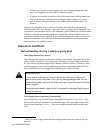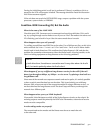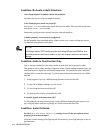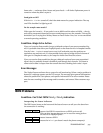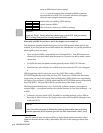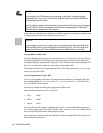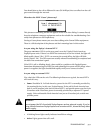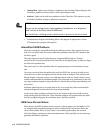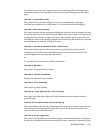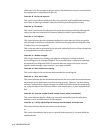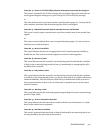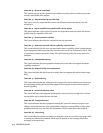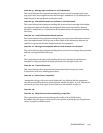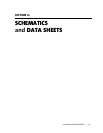
9-18 TROUBLESHOOTING
• Terminal Error. Lights red to indicate a problem on the terminal (ZephyrExpress) side.
Could be a problem with the cable or with ZephyrExpress itself.
• Line Error. Lights red to indicate a problem with the Telco line. This means a very ba-
sic kind of problem; usually no physical connection.
h
HOT TIP!
You can use an analog phone, high-impedance headphones, or a telephone
“butt” test set to do a basic check of ISDN lines:
You should hear a clicking sound or white noise. If you don’t, the line is dead.
• Combinations of lights and blinking allow a fine degree of explanation, see the
NT1manual for complete information.
Intermittent ISDN Problems
These are among the most difficult kinds of problems to solve. Rest assured, however,
that we’ve yet to lose one! This section addresses problems where the NT1 indicates that
the line is good.
The most important tool is ZephyrExpress’ integrated ISDN analyzer. This lets
you look at the transactions between the Telco line and ZephyrExpress, to help you figure
out where the problem lies.
The usual cause is a Telco problem, like mis-programming or an intermittent connec-
tion.
If you are convinced that the problem lies with the ISDN line, you may be able to con-
vince the Telco to have an engineer look at the line with an analyzer. This works much
like the Zephyr’s internal analyzer, but with more detail, and in a format which is more
readily understandable by telephone people. This procedure may sometimes be the only
way to get a phone company to pay attention: it’s hard to deny evidence provided by your
own test set.
Problems which happen at a certain time of day, or a certain day of the week could be
related to diagnostic routines the Telco may run periodically.
In rare cases, there could be a software bug in the Zephyr which reacts badly to some-
thing coming from the ISDN line. Telos customer support will communicate the prob-
lem to our engineering guys for resolution once it has been verified.
ISDN Cause Phrases/Values
When there is an ISDN problem in the network, a phrase appears on the Zephyr’s LCD
(or using the built-in protocol analyzer) which communicates information about the
cause of the trouble. These “Cause Values” are numbers generated by the network,
which the Zephyr translates to the associated phrases. When possible, we use those sug-
gested by the Bellcore standard.



